Aug 8, 2017
East of downtown, Nagasaki's temples dazzle
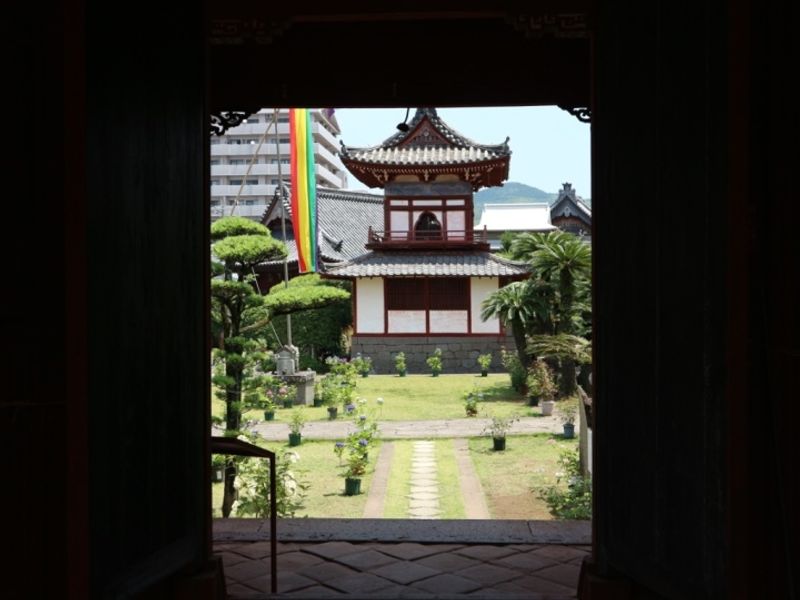
East of Nagasaki’s Hamano-Machi shopping district lies a series of temples perched on the mountain slopes commanding impressive city views and putting on display an impressive show of the city’s Chinese heritage. A stroll around this delightfully peaceful and laid back part of Nagasaki could be an unexpected highlight of visits to this part of Japan.
Maybe temples aren’t the first things that spring to mind in conversations about Nagasaki. The Kyushu city, where religion is concerned, is more commonly associated with the Catholic Church about which there are consistent and sometimes gloomy reminders reflecting of the persecution and fear that often accompanies attempts at conversion.
While the overseas fixtures and fittings of the Vatican make for interesting sights whatever one’s spiritual persuasion Nagasaki can also delight with some of its temples. Even more so given that so many visitors to the city are drawn to attractions elsewhere.
East of the downtown Hamano-Machi area, where the religion is consumption, a row of temples sit on the steep mountain slopes that overlook the city. Here the Nagasaki visitor can hop (and climb) from temple to temple with freedom from crowds and cameras to take in some lofty Nagasaki views as well as stand in admiration at the temple architecture on display.
Heading roughly south to north the first of the temples is Sofukuji, close to the Shokakuji-Shita Streetcar stop, the end of the line.
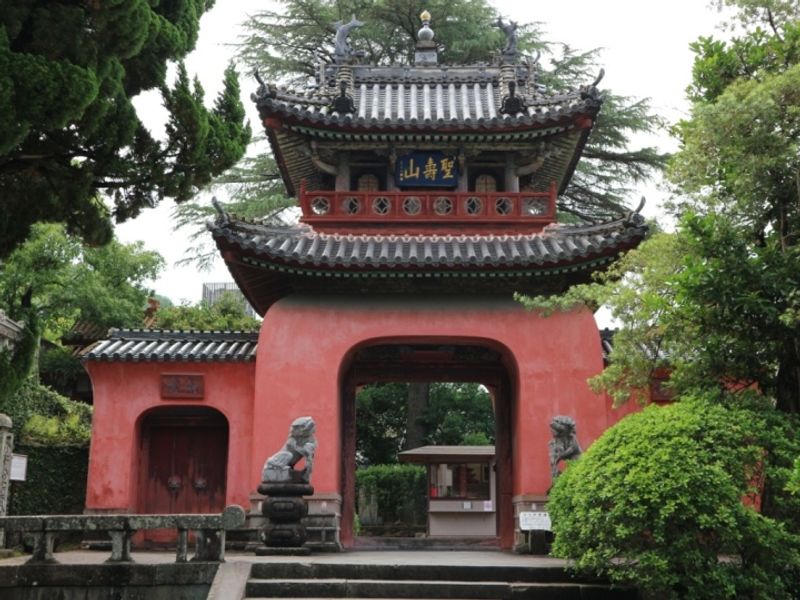
(Sofukuji Temple, Nagasaki)
Sofukuji is one of a number of striking reminders of Nagasaki’s Chinese heritage which extends its cultural influence in Nagasaki to this day, not least with the city’s Chinatown. And “striking” really is the apt term here. Even before you climb up the steep steps to the central complex you are greeted by Sofukuji’s impressive gate and the first taste of the almost blood red coloring that coats much of the structures further adding to the drama. The temple dates back to 1629 with some parts of the complex actually constructed in China shipped over to Nagasaki and reassembled at the site.
When you enter Sofukuji’s main courtyard be sure to take a look up at the intricate latticework. From the top of the steps that lead to this part of the complex you can get an impressive view over the gate at the entrance and the city beyond.
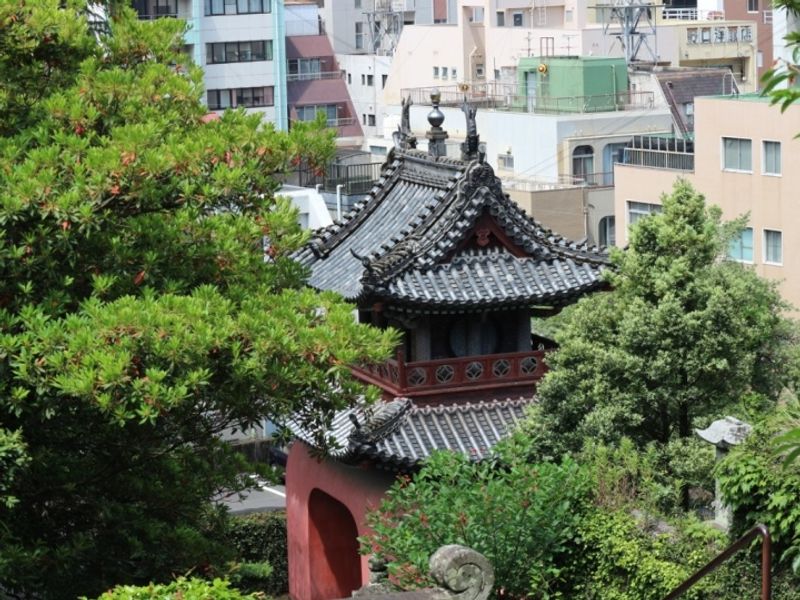

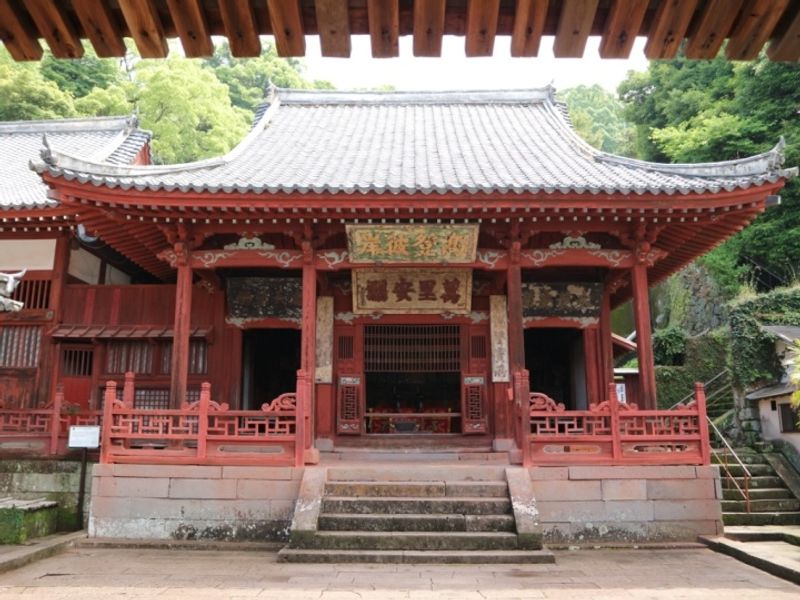

Leaving the temple turn right onto Sofukuji-Dori, a quiet yet broad street of bohemia - indie coffee shops and boutiques seem to be the order of the day here.
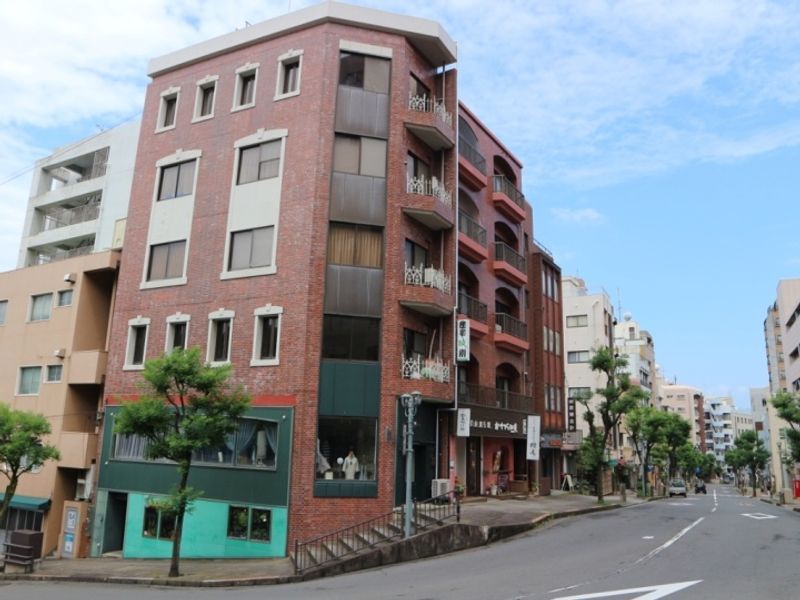
(Bohemian Sofukuji-Dori, Nagasaki)
A few meters on your right some lung busting steps lead up to Daikoji Temple. At the end of the first set of steps be sure to take pause (you’ll need it in preparation for the main climb anyway) and admire the flourishes of Daikoji’s mon (gate). Once you’ve completed the main climb you’ll be greeted with a scene shared by other temples in this part of Nagasaki, a kindergarten sharing the temple grounds. Maybe it’s just this expat, but I don’t typically associate Japan with schooling its youth in a religious setting. However, Nagasaki really is unlike anywhere else in the country and it’s interesting to see in a city so heavy (for Japan) in Catholicism that some of the locals see it fit to send their children to school in the grounds of a temple. Anyway, aside from whatever education is provided in the classroom, students here are sure to develop some strong leg muscles if they have to haul their bags up these steps every morning.
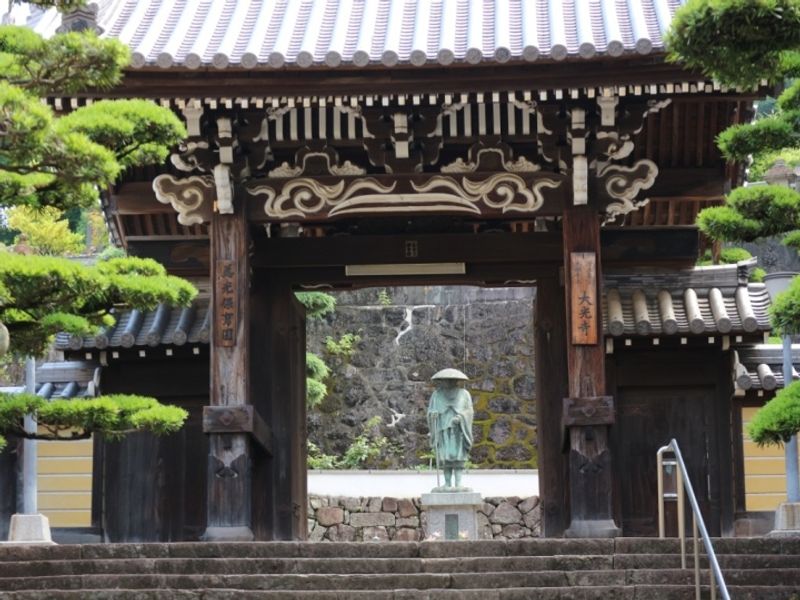
(Daikoji Temple mon, Nagasaki)
Next door to Daikoji we popped our heads into the temple of Hosshinji which is, to our relief, free of any long sets of steps. Hosshinji is home to a bit of a quirk, the oldest bell in Nagasaki which dates back to 1438. Impressively old.
If you’ve got the legs, behind Hosshinji is the large complex of Daionji. Perhaps “behind” doesn’t do things justice. “Looming over” would be better. Daionji sits at an impressive height and commands some equally impressive views over Nagasaki and the hills beyond. It really is worth the climb. Views aside though, perhaps the most impressive feature of Daionji is its whitewash paint job. This expat had never seen a temple dressed in white before (not in Japan at any rate) and in the brilliant Nagasaki sun Daionji had a look that could almost be described as ethereal. Still, if a temple is where mere mortals can feel the presence of the gods, a brilliant white coat adds to the mood.
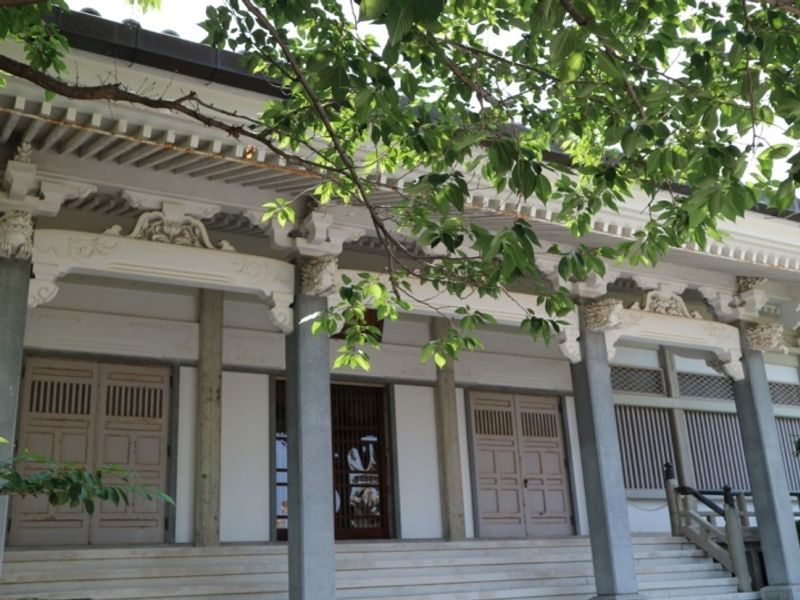

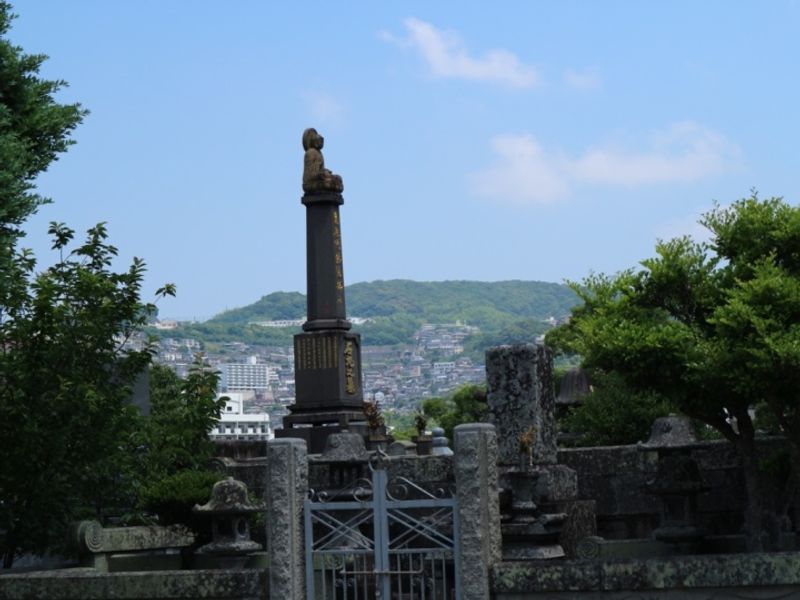
(Daionji scenes, Nagasaki)
Descend from Daionji onto a thinned-out Kajiichi-Dori. Here keep your eyes right and look up the mountain slopes for more temples that snag the interest, Kotaiji being one that caught ours. The walk up to the entrance of Kotaiji is one that reminds of the quiet country lane despite the growling presence of urban Japan behind you. Kotaiji is another temple complex used to house a seat of education for Nagasaki’s little ones. For the layman, the two institutions make for a mad contrast - gaudy jungle gyms set against the sombre accoutrements of the reverent. Still, Kotaiji is a gorgeous site full of greens and country flowers. As you enter, the building immediately on your right is home to a huge Buddha (who presumably can’t be too happy about the proximity of a whirling playground scene. Thankfully for us though, the time of visiting was a weekend.

(Kotaiji gardens, Nagasaki)
More temples await exploration along Kajiichi-Dori but we ended ours at Kofukuji perhaps the largest of the complexes we visited on this day and, like Sofukuji, another Chinese contribution to the city. Kofukuji is the oldest temple in Nagasaki, opened in 1620, and rewards an extended visit with all its delightful nooks and crannies. It almost has a “secret garden” feel to it - archways leading to quiet features fighting the encroaching greenery some of which is very tropical. Also like Sofukuji, there is some impressive latticework on display here. For quieter views over the city climb into and up the staggered cemetery that extends from the north of the temple grounds.
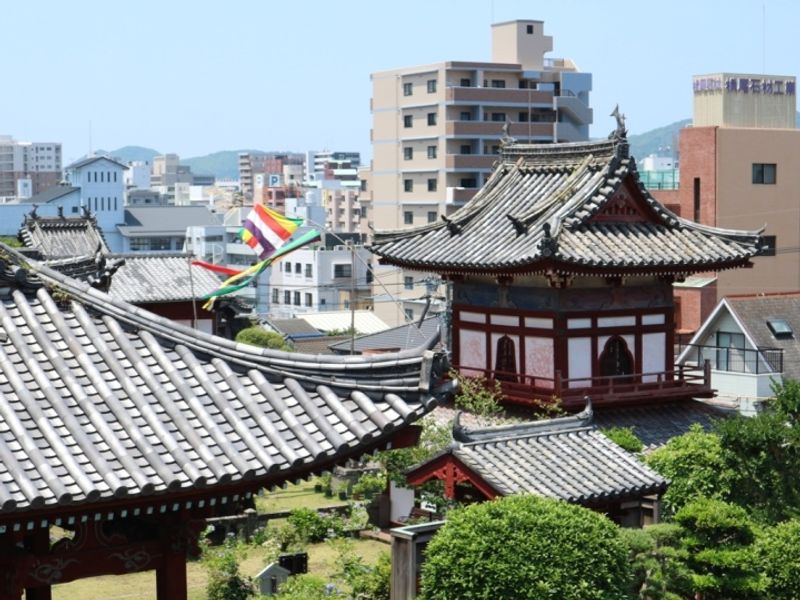
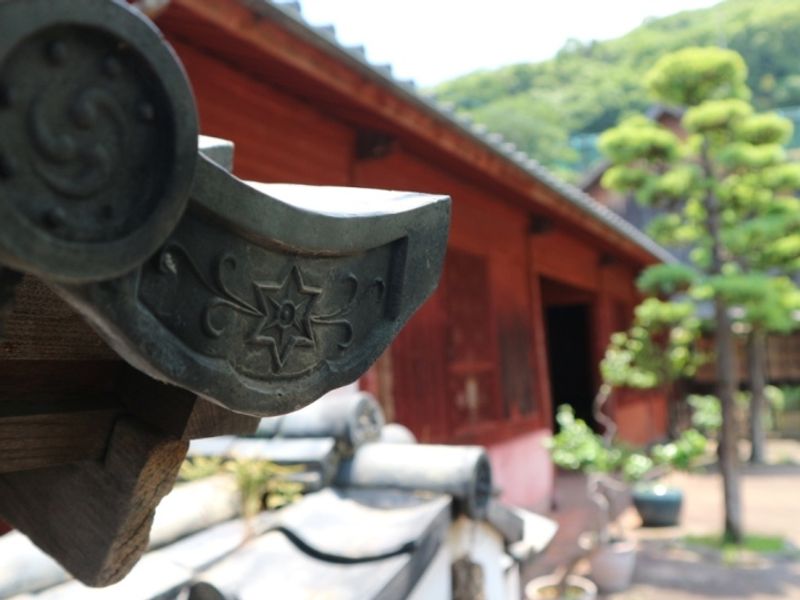
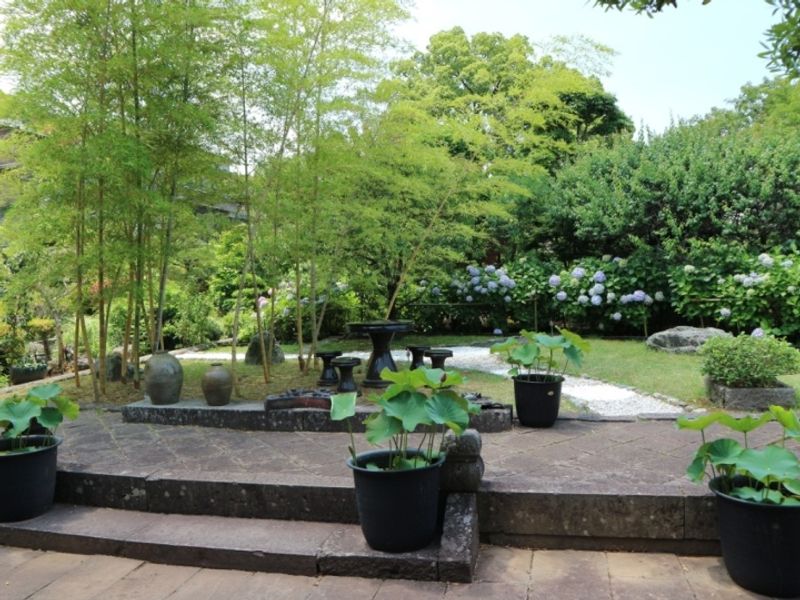
(Kofukuji scenes, Nagasaki)
From Kofukuji cross over Kajiichi-Dori and descend to the streets that flank the Nakashima River. Head roughly south along the river and you’ll soon reach Nagasaki’s much loved Meganebashi (Spectacles Bridge) constructed to afford easier access to Kofukuji.
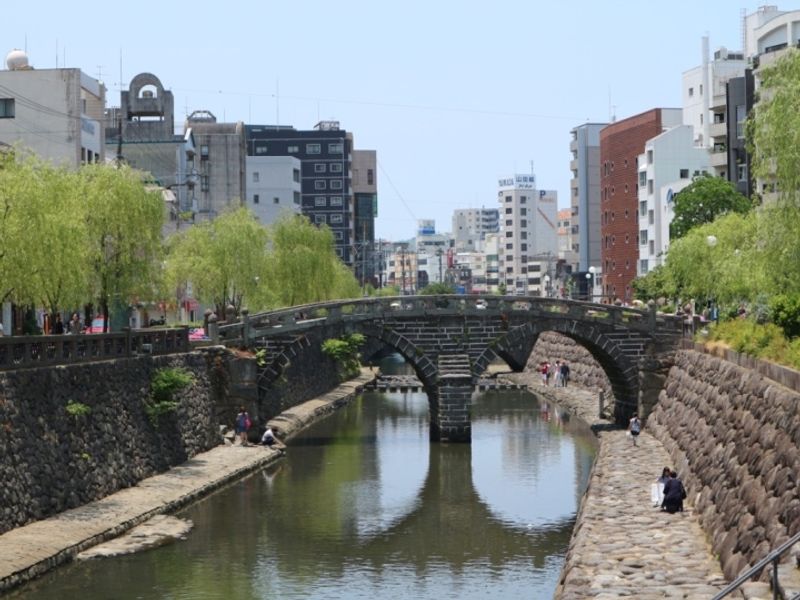
Both Sofukuji and Kofukuji are open from 8:00 - 17:00. Entrance - 300 yen. The other temples along Kajiichi-Dori are free to enter, others may command a small entrance fee.
We used the One Day Pass to get around Nagasaki on the Streetcar system. At 500 yen it makes good sense (individual Streetcar fares are a flat 120 yen). Passes can be bought at your accommodation, tourist offices, and JR Nagasaki Station. They can’t be bought onboard the trams themselves.
Have you ever been to Nagasaki? Did you visit any of the temples? Let us know your Nagasaki highlights in the comments.
Further reading ...
Three days / two nights in Nagasaki - budget breakdown and itinerary
See us on ...
Twitter: @City_Cost_Japan
Facebook: @citycostjapan



0 Comments